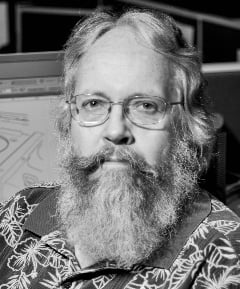The Czechoslovakian Hall of La Crescenta

president of the Historical Society
of the Crescenta Valley and loves local history. Reach him at
lawlerdad@yahoo.com.
To recap last week’s article, Slovakian immigrant Henry Biescar, after prospering in Los Angeles around the turn of the century, retired to La Crescenta in 1915. The Slovakian community in Los Angeles was vibrant, and several cultural organizations for both Czechs and Slovaks thrived here. In 1928 several LA based groups such as the Slovak Sokol (a nationalistic youth fitness organization), Czech Sokol, Masaryk Club (Masaryk was president of Czechoslovakia), Western Bohemian Association, Pasadena Beseda (a social organization), and the Pilna Ruka Sewing Club banded together under the umbrella group the Czechoslovak Patronat. They began the task of raising money to build a hall, and Henry Biescar donated 4 acres in La Crescenta for its site.
By 1933 $10,000 dollars had been raised and construction began on the hall at 2723 Orange Avenue, near where Monte Vista Elementary School is today. The hall was large, 65 x 85 feet and two stories. Interior features included a 40 x 60 foot ballroom with a speaking platform, a dining room, a billiards room, and a library. The extensive grounds were landscaped to form a beautiful park for big picnics and outdoor activities. This large scale construction activity was a financial boon to the depressed economy of La Crescenta as local labor and materials were used for the entire project.
An opening day ceremony was orchestrated, attracting thousands to the event, with representatives from Czechoslovakia in attendance. The hall was wildly popular with the many Czech and Slovak organizations in LA, and was well used each weekend for ethnic dances, parties, and picnics. October 28th each year was a huge celebration – Czechoslovakian Independence Day – honoring the formation of an independent Czechoslovakia in 1918. Also called Masaryk Day after Czechoslovakia’s first president, the event drew scores of Czech, Slovak, and Bohemian organizations together at the hall in La Crescenta for a weekend of dances in native costume, folk songs, and feasts of old-country food – roast pork, sauerkraut and dumplings, and traditional pastries. The Czechoslovakian Hall was rented out to other ethnic groups as well. The LA Times reported that in 1936, hundreds of Poles attended a picnic there, to feast on Polish foods and dance waltzes, all to raise money to build a Polish Hall in Los Angeles. In 1937 a huge Hungarian Festival was held there, sponsored by a Los Angeles-based Hungarian language newspaper. A Hungarian Gypsy band provided the music for folk dances in native costumes, and film-star Bela Lugosi acted as master of ceremonies. For La Crescenta the park was a boon to the local economy as outside dollars flooded in each weekend. One old-timer told me that as boys, he and his brothers would sneak into the weekly events to score free food and beer.
The parties went on and on at the Czechoslovakian Hall, through the ‘30s and into the ‘40s. However, problems began to crop up as the post-war housing boom took hold in CV. The hall, originally located out in the sagebrush, was now surrounded by suburban homes. By 1948 the weekend parties, with hundreds of cars, loud music and lots of drinking began to grate on the new neighbors of the Czechoslovakian Hall. The surrounding homeowners presented a petition to County Regional Planning asking them to exert some control over the events staged at the hall. Planning ruled that the owners of the hall, the Czechoslovakian Patronat, could no longer rent the hall to outside organizations. At the same time, the County Supervisors, also under pressure from the neighbors, began to pester the Patronat to upgrade the hall, and threatened to revoke their license entirely. Faced with the reduced rental income, and added costs to upgrade the hall, the Patronat sold the property. Henry Biescar’s son sued the Patronat on the basis that the donated land was donated to be used for the Hall and not sold, and won the suit. Today the Gethsemane Lutheran Church occupies part of that large lot. The Slovakian-American Biescar family and the short-lived Czechoslovakian Hall is an example of yet another immigrant group that influenced the growth of La Crescenta.
